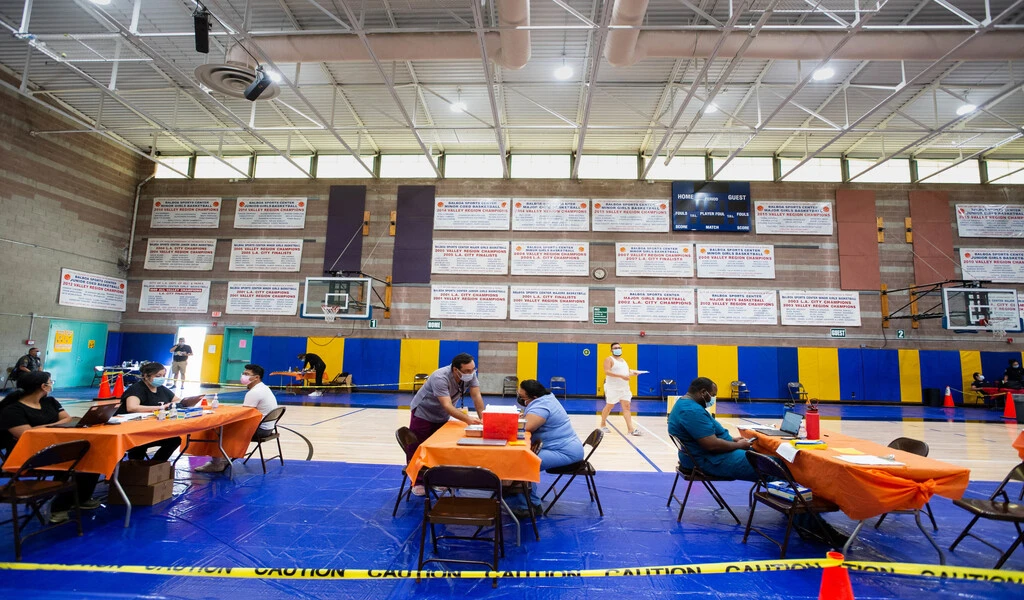News
Winter and COVID-19 in the US: Navigating the Surge with Proactive Strategies

Winter and COVID-19 in the US: Navigating the Surge with Proactive Strategies – There was an 8.6 percent spike in cases in the US in the week ending November 11, with 16,239 new hospital admissions.
The latest CDC maps show a significant rise in coronavirus hospitalizations in fourteen states.
The southern Mountain, upper Atlantic, and portions of the South spike more than the rest of the country.
Because the virus spreads more readily in cooler conditions, this was anticipated by health officials.
As winter envelops the United States in its chilly embrace, a concerning pattern emerges – a surge in COVID-19 cases. This article delves into the intricate relationship between winter conditions and the escalation of the pandemic, exploring factors that contribute to this seasonal spike.
Winter Conditions and COVID-19
Influence of cold weather on virus transmission
Cold weather is not merely a seasonal inconvenience; it wields a tangible impact on the transmission of respiratory viruses. Respiratory droplets linger in the air for extended periods, increasing the risk of infection. Additionally, the cold’s influence on outdoor transmission dynamics adds a layer of complexity to the virus’s spread.
Indoor gatherings and their role in the surge
The winter season encourages people to congregate indoors, creating environments conducive to virus transmission. Close-contact settings become more prevalent, posing challenges in maintaining adequate ventilation to reduce the risk of infection.
Seasonal impact on the immune system
Winter’s chill is not only felt in the air but also in our immune systems. The cold season weakens the body’s immune response, rendering individuals more susceptible to infections. This seasonal vulnerability amplifies the impact of COVID-19.
Behavioral Changes
Reduced outdoor activities and its effect on health
Colder temperatures often lead to a decline in outdoor activities, contributing to a reduction in physical exercise. This not only impacts physical health but also has implications for mental well-being.
Increased time spent indoors and its implications
As winter prompts more time spent indoors, individuals find themselves in closer proximity to one another. This increased indoor density becomes a breeding ground for rapid virus transmission, posing challenges for containment.
Holiday season and its contribution to the surge
The festive holiday season compounds the issue. Intensified social interactions during celebrations create opportunities for the virus to spread, challenging adherence to preventive measures.
Challenges for Healthcare Systems
Increased hospitalizations during the winter
Winter brings with it an influx of COVID-19 cases, leading to heightened hospitalizations. This surge places immense pressure on healthcare systems, necessitating a strategic approach to manage the increased demand for medical care.
Strain on medical resources and personnel
The surge in cases strains medical resources and personnel. Overwhelmed healthcare infrastructure and stressed healthcare professionals further complicate the pandemic response.
Importance of vaccination during the colder months
Vaccination becomes paramount during the colder months. It serves as a critical tool in mitigating the impact of the winter surge, preventing severe cases and reducing strain on healthcare resources.
Government Responses
Winter-specific public health measures
Governments must tailor public health measures to address the unique challenges posed by winter. Guidelines should encompass factors like increased indoor transmission risk and the heightened demand for medical services.
Strategies for managing the surge in colder climates
Strategies for managing the surge involve allocating resources for increased testing and contact tracing. Enhancing public communication becomes imperative to ensure widespread compliance with guidelines.
Public Awareness and Education
Communication on winter-related risks
Public awareness campaigns should focus on communicating specific winter-related risks associated with COVID-19. Understanding these risks is crucial for individuals to adapt their behaviors accordingly.
Encouraging preventive measures during the cold season
Preventive measures such as mask-wearing and social distancing remain pivotal. Promoting vaccination as a key preventive measure is essential in reducing the overall impact of the virus.
Adapting to the New Normal
Importance of ongoing precautions
Adapting to the new normal requires continuously integrating preventive measures into daily routines. Cultivating a mindset of resilience against seasonal challenges ensures sustained efforts in combating the virus.
Incorporating seasonal considerations into public health strategies
Public health strategies must adapt to seasonal considerations. This involves developing flexible approaches to address winter-specific challenges and maintaining an agile response to changing seasonal dynamics.






























